7 rules designers always follow to find the best exterior paint for your home
From looking at the home's surroundings to factoring in the light, these are the rules designers follow to make sure they're always picking the best exterior paint
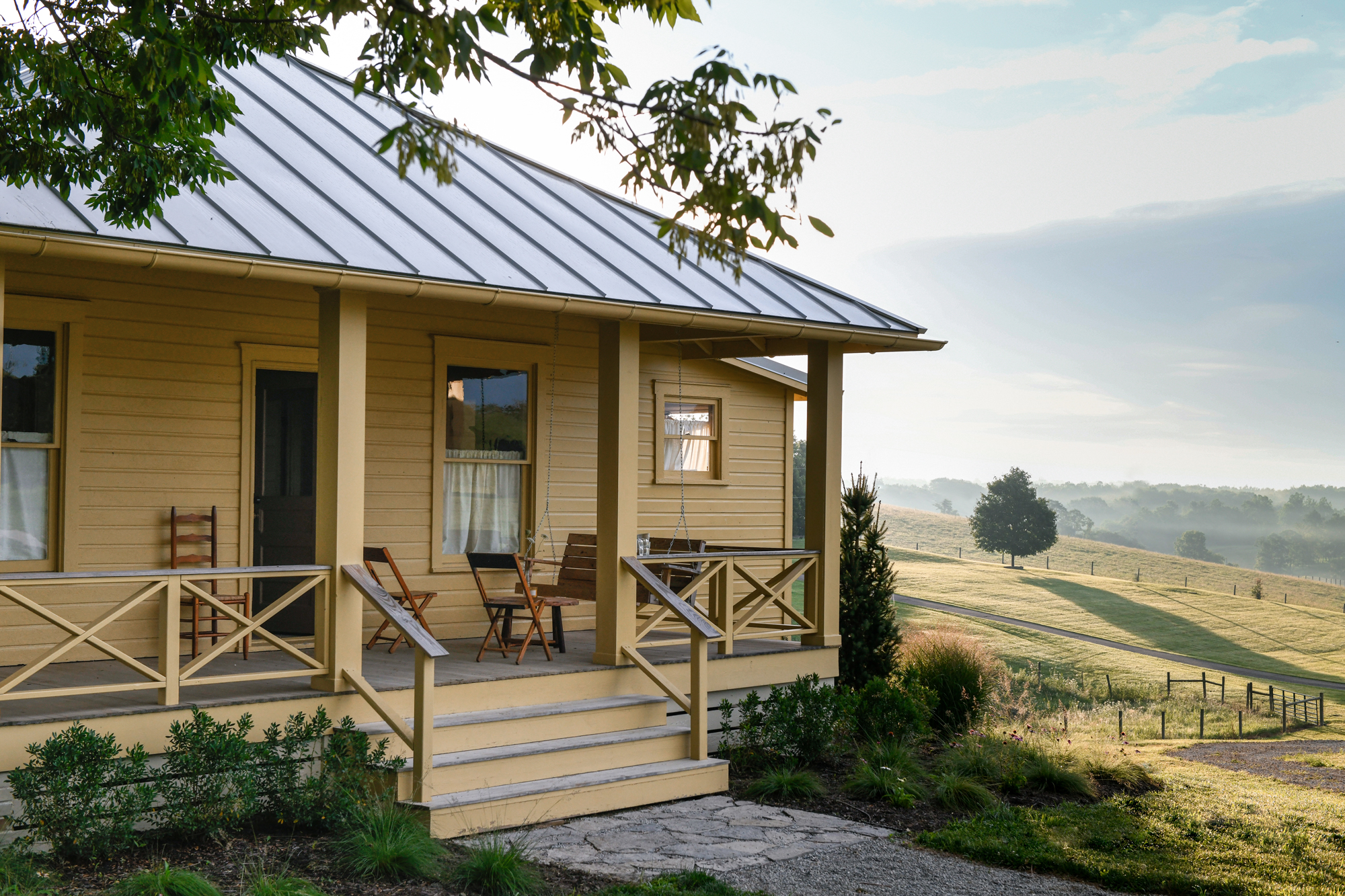
Picking the exterior paint for your home is not a choice you want to get home. It's the first thing you see when you return to your house, the only thing most of your neighbors will ever get to see. A big statement that can be overwhelming if you don't know quite where to start.
But there are a few rules designers always follow to ensure they get it right. 'We are regularly weighing out exterior colors and how they will sit in their respective settings,' says Liz Hoekzema of the design studio KLH Homes. 'Michigan weather, in particular, is tough on exteriors – we have hot direct sun in summer and loads of snow and ice in winter – so painted exteriors are a natural choice for many of our clients.'
Factoring in weather conditions are just one part of making a successful choice for your exterior paint, and the rest of the steps will help guide you away from any expensive mistakes.
1. First, decide if you want to stand out or recede
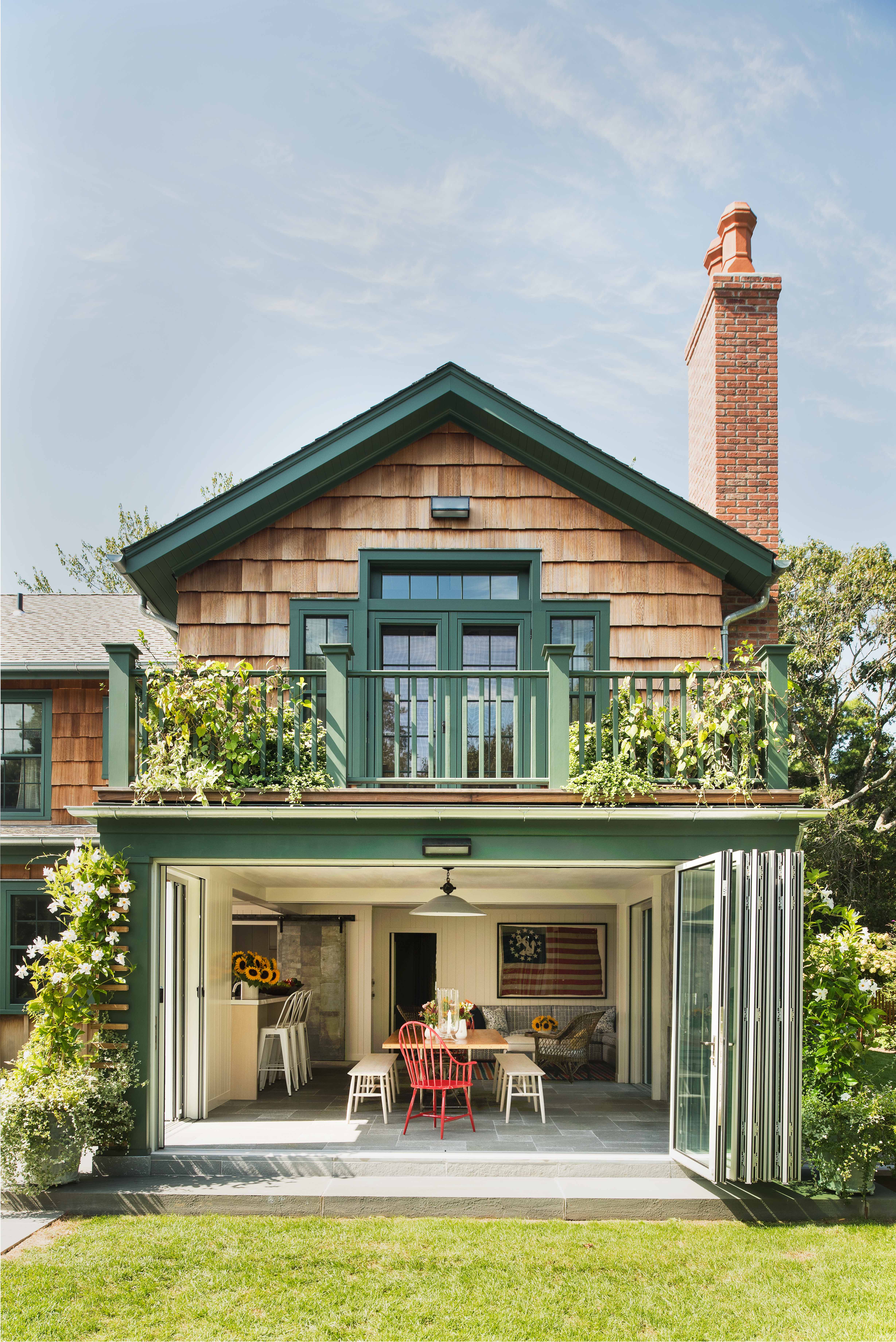
Just as when you're choosing an interior paint color and deciding what mood you want that space to evoke, so first you must decide on the motivation behind an exterior paint choice, too. What will you want it to do? Do you want a home that's the most talked about on the block, or one that blends calmly into its surroundings?
'When choosing colors for the exterior of a home, the big consideration is whether I want the house to stand out or recede into the landscape,' says the New York-based designer Phillip Thomas. 'For a house to stand out, I opt to use colors that reflect natural light, such as white or light gray. For a house to recede into the landscape, I gravitate towards darker colors that absorb rather than reflect light. These colors include dark greens, blacks and grays.'
He was behind this dreamy project in Bellport, NY, above. 'We chose this beautiful dark green for the exterior paint color to complement the simplicity of the architectural detailing of the house and to have the house recede into the natural park-like setting of the property,' he says.
2. Always sample colors
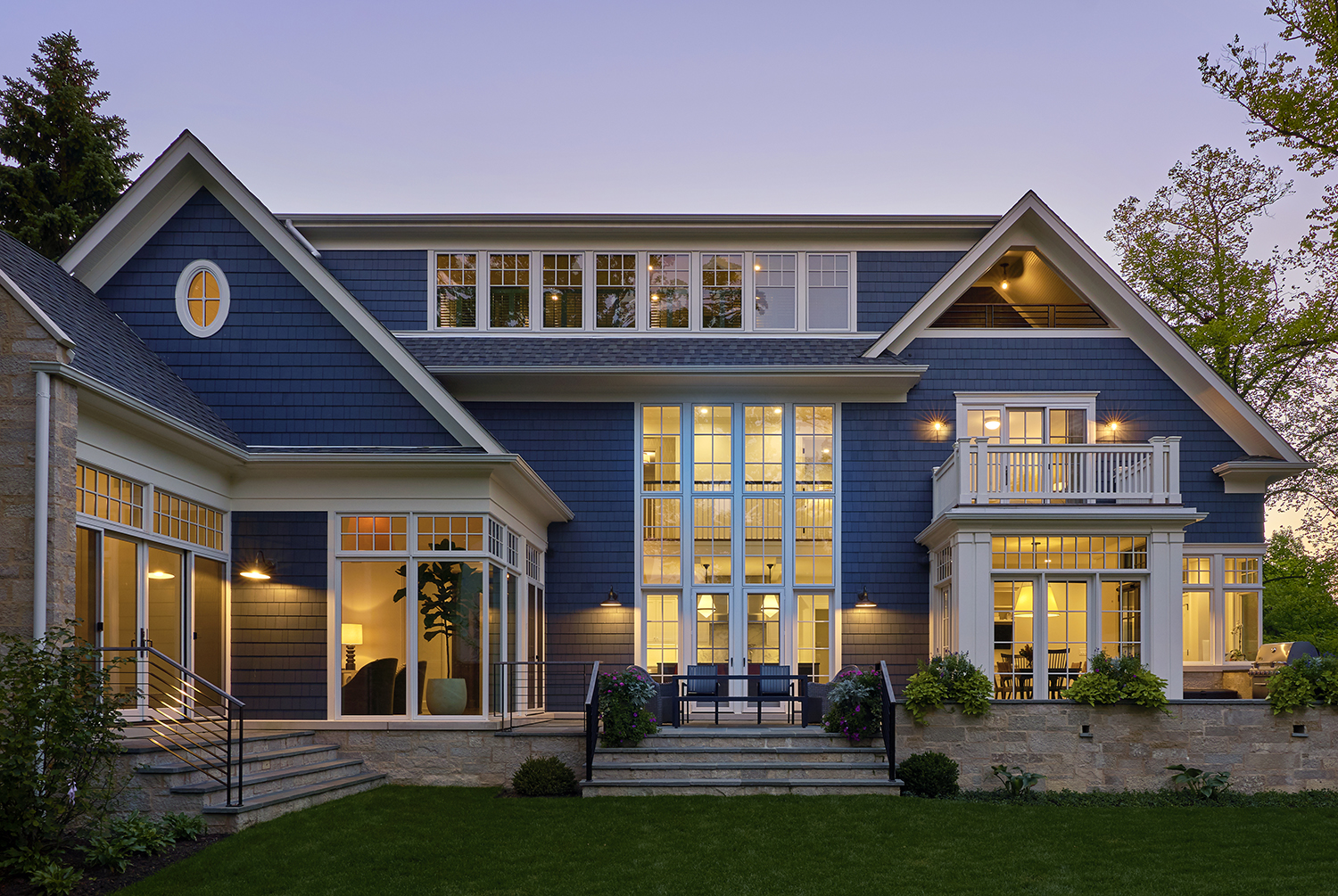
Once you've narrowed the look of the exterior down, make sure you sample, sample sample.
'We always always sample colors prior to selection, and review the samples at various times of day, on both sunny and overcast days,' says the Michigan-based designer Liz Hoekzema of KLH Homes. 'Since both sun and shadow can produce odd undertones at times!
En Masse's Partner and Design Director Lucas Goldbach is in total agreement. 'If the paint has a color tone it is extremely important to try it in large sections and in varying light conditions,' he says. 'If possible, it is great to see the color up in the winter as well as when the snow melts away. Blue and green colors can change dramatically in those different conditions.'
3. Choose a color that fares well in different lights

This project in Michigan was painted Jasper by Sherwin-Williams, a favorite shade of KLH Homes' Liz Hoekzema for how it manages to work well in both light and shade.
'Jasper is top on our list of exterior colors for how it reads a beautiful true, deep green in direct sun, but in shadow gives a gloriously moody effect,' she says. Because a house will naturally be in shadow or out throughout the day, do make sure to try those samples on various corners and to review each one in both the morning, afternoon and evening.
4. Focus on the house's building materials
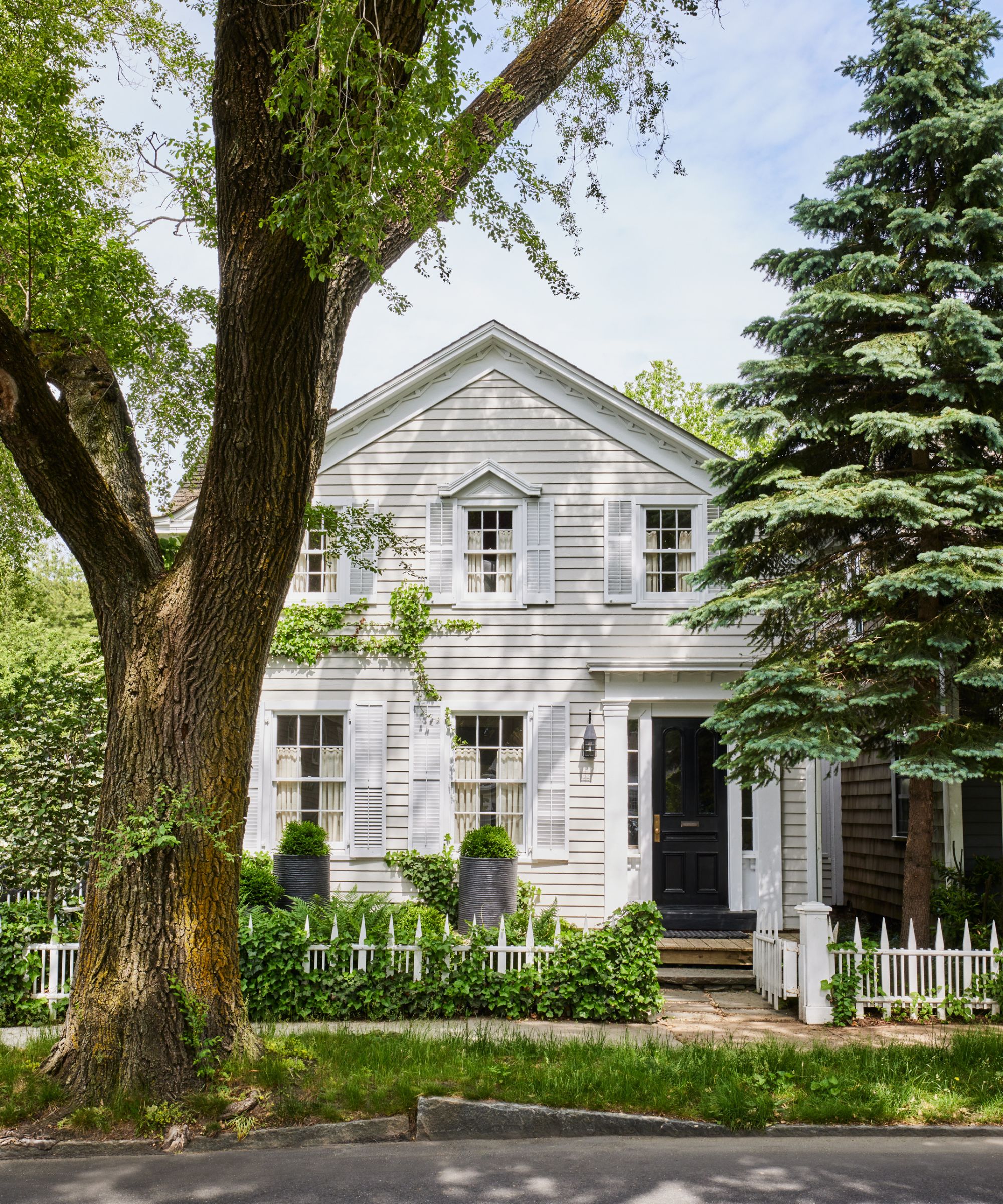
'Our approach to selecting a color is a multistep process that begins with the site conditions – the quality and intensity of the light; followed by assembling the natural materials that exist on the exterior,' says the architect Charles Otto Heydt, owner of Pak Heydt Associates. 'From the roofing tile or slate to the stone on the walls or porches and terraces to stained wood and basically anything that will not be painted. We strive to select colors that will combine all these factors while also transcending the temporal fad so that it will age well and remain a timeless classic.'
By working with the house's unpainted surfaces you can create a palette that works, either with rich contrasts or complementary tones, much as you would build a palette for an interior space.
5. Factor in your surroundings

'We often strive to be sympathetic to the surroundings by recalling some tones seen in the area, or the landscape,' says Lucas Goldbach from En Masse. It's a sensitive approach that leads to surefire success, a home that works well within its placement.
It was an approach adopted by Liz Hoekzema for the house painted in Jasper. 'With the setting of the house being both lakefront and surrounded by forest on two other sides, there is a wonderful juxtaposition of bright summer leaves and cool water tones against this inky green,' she says. 'It's probably our most asked-about exterior color!'
And Ohio-based design firm Dutton Studio used this same principle to go in a different direction. 'When thinking about exterior paint, I love to be inspired by the site,' says the studio's founder Greg Dutton. 'At the cottage project [shown above], there is a wildflower called golden rod which blooms throughout the surrounding pasture fields. It was my inspiration for the buttery yellow that was selected for the exterior scheme. Though decorating with yellow can be a bold choice – which I love – in this instance it also helped tie the house to the site.'
6. Take a step back
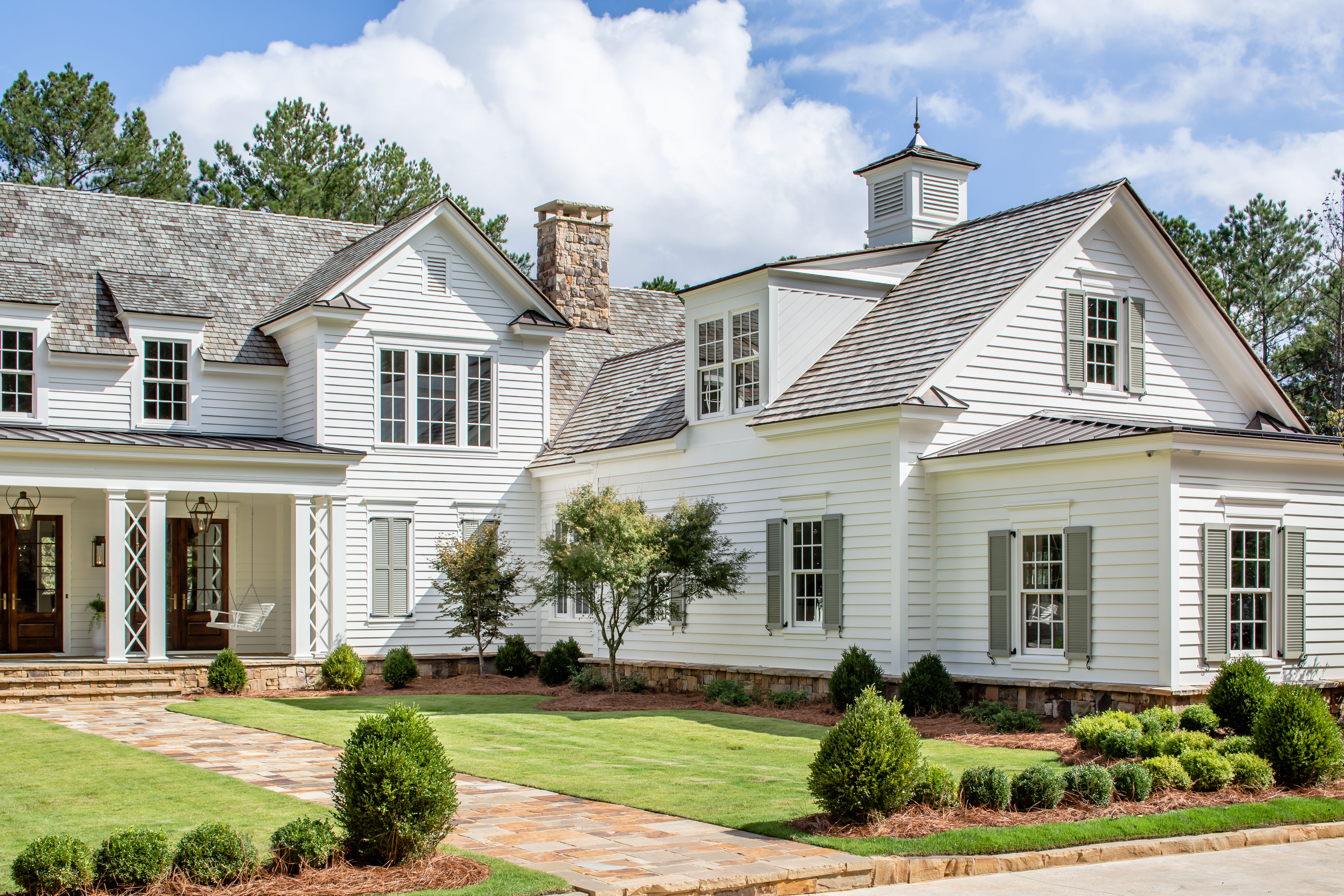
Once you've looked at the light, the shadow, the surroundings and the home's materials, it's important to take a step back, view the property as a whole, and consider it holistically rather than as a series of disparate qualities.
'Choosing a paint color is a lot like dressing a person,' says the Alabama-based interior designer Ashley Gilbreath. 'You want to make a selection that accentuates all of the best parts and plays nicely with the overall look. For exterior paint colors, we always consider the setting, foundation material, texture of the exterior, and so on…and have the painter mock up a sample of the selection so we can evaluate the effect of light and shadows, the way the color plays with the surroundings, and the various building materials.'
7. Consider the durability

en masse
Painting the exterior of a house is not something you want to do very often, and it's a sad fact of life that paint on the outside of a home ages. Not fast, sure, but gradually, as the seasons roll over it and life goes by. So if there are some parts of the exterior you don't have to paint, perhaps you can leave them so as to cut down on a chore in a few years' time.
'The durability of a brick or stone house has a sense of permanence to it and we often include at least some amount of masonry,' says Lucas Goldbach from En Masse. 'Improvements in cladding materials and paint has allowed for less and less maintenance of homes with siding or stucco.'
Sign up to the Homes & Gardens newsletter
Design expertise in your inbox – from inspiring decorating ideas and beautiful celebrity homes to practical gardening advice and shopping round-ups.
Pip Rich is an interiors journalist and editor with 20 years' experience, having written for all of the UK's biggest titles. Most recently, he was the Global Editor in Chief of our sister brand, Livingetc, where he now continues in a consulting role as Executive Editor. Before that, he was acting editor of Homes & Gardens, and has held staff positions at Sunday Times Style, ELLE Decoration, Red and Grazia. He has written three books – his most recent, A New Leaf, looked at the homes of architects who had decorated with house plants. Over his career, he has interviewed pretty much every interior designer working today, soaking up their knowledge and wisdom so as to become an expert himself.
-
 How to clean a patio – 6 different methods, and when you must use a chemical cleaning agent
How to clean a patio – 6 different methods, and when you must use a chemical cleaning agentFrom manual scrubbing, natural solutions or calling in the pros, industry experts reveal the benefits and considerations of each method
By Andy van Terheyden Published
-
 Kris Jenner's favorite air fryer, the Ninja Crispi, is the perfect small kitchen solution – it deserves a place on the most compact of countertops
Kris Jenner's favorite air fryer, the Ninja Crispi, is the perfect small kitchen solution – it deserves a place on the most compact of countertopsKris approves of this compact yet powerful air fryer, and so do our own kitchen appliance experts, praising it for its multifunctionality
By Hannah Ziegler Published
